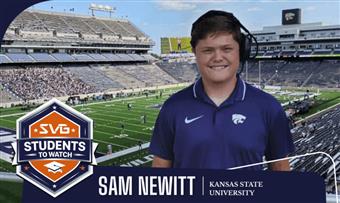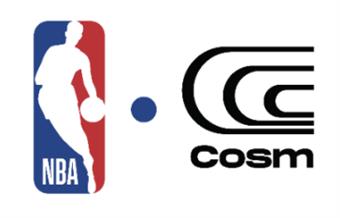 New frontier: Extreme H's Ali Russell on the evolution of motorsport from electric to hydrogen By Heather McLean
New frontier: Extreme H's Ali Russell on the evolution of motorsport from electric to hydrogen By Heather McLean Thursday, November 6, 2025 - 09:09
Print This Story
FIA Extreme H World Cup is produced by host broadcaster, Aurora Media Worldwide
Motorsport has a new frontier and it is the FIA Extreme H World Cup, where hydrogen fuel is taking centre stage in the transition to clean energy. Extreme H is about showcasing cutting edge hydrogen technology in rugged racing environments, while pairing one female and one male driver in every team to drive equality forwards.
Extreme H has grown from the legacy of Extreme E. Extreme E's inaugural X Prix raced off into the sand dunes in April 2021 in AlUla, Saudi Arabia. Desert X Prix Race 2, the official Final Lap for Extreme E, took place on 4 to 5 October 2025, marking the culmination of an innovative series.
Yet the Final Lap set the stage for the launch of Extreme H on 9 to 11 October. The new event featured a new format, including Time Trials, Head-to Head and Multi-Car disciplines, culminating in a winner takes all, eight-car World Cup Final, all taking place in the space of one week rather than a year-long global tour, like its predecessor.
Both events took place in the new city of Qiddiya, Ali Russell, Extreme E's - and now Extreme H's - managing director, says: The final championship [for Extreme H] will always be in Saudi Arabia in Qiddiya for the next five years, which is the new city of play about 35 kilometres from Riyadh. So there's a strong alignment and support there from Qiddiya, the Ministry of Sport, Saudi Motorsport Company, the PIF, to name a few.
Evolutionary platform
Russell says he was not sad to see the end of Extreme E as it was an evolutionary platform for Extreme H. I see it as an evolution rather than an end. The Last Lap and the positioning of it being the end of Extreme E was more of a marketing campaign to have an ability to reconnect with our existing fan base; we have something like 250 million people that have an interest and 150 million of those actually are actively watching. We have that large audience we wanted to position the sport [as a] reconnect because it'd been a year since we'd had a race, and then translate those fans onto Extreme H. That was the goal and the objective.
On the end of Extreme E, he does add: I wouldn't say I'm sad, I'm pretty pragmatic about it. I feel that there was a lot of competition in the electric space. The first one was Formula E, which was our first business, and in a way they've been so successful that it's left very little room for other parties. And then Nascar has got an electric series, World Rally Cross has, and there's a lot of other [electric] touring cars and so on. With us moving to a unique space in hydrogen, I think that bodes well because we're getting back to what motorsport is for, which is developing unique technologies that can translate from the race environment to the road environment. You and I can get better products as a consequence of technology that's been developed through racing.
New format
The key difference at this point between Extreme E and Extreme H apart from the radical new power source is the format for the races, which has also evolved in order to accommodate broadcasters more, as well as captivate fans. Rather than a calendar of races that tours the world, Extreme H is now taking place over less than one week, enabling rights holders to saturate fans in a flurry of activity.
The new format involves five races over several days. Comments Russell: We've made the racing better in terms of multi-format and we've got more momentum, doing it in one week as opposed to over a 12 month period with two month gaps inbetween the races, because you're going from the Arctic circle to a desert. But we still have equality and diversity, and it's still off road.
So what it gives you is momentum and that appointment to view and to watch, and that excitement over a shorter period of time. What we're doing is we're operating very much like a football World Cup or an Olympic Games. The Olympic Games is once every four years and so is the football World Cup, but we still get hugely excited about [them both], says Russell.
It is all about the fans, notes Russell: We start with a fans first approach, he says on the one week of festivities in Qiddiya. It's better for fans because what they're getting is great content. The first thing is the environment is amazing. Qiddiya is an incredible backdrop. It still plays to that Extreme element of the brand, and the men and women driving has helped us to have a more balanced audience; I think it's 47% to 53% [female to male fans] in terms of the gender balance, so it's male orientated, but not by much.
The new format races are all about bringing the fans more excitement in a more digestible way, says Russell. With that short form racing, you're not asking someone to sit down and watch three hours of racing here or 24 hours of racing there. This is about a 10 minute race, but a multitude of 10 minute races. You look at the head-to-heads we had, which were a minute to two minutes long, and that was drag racing in the middle of the desert. So our formats are very much for a younger demographic, a more gender balanced audience, and that's the sort of audience that broadcast is trying to get.
So what we have is a product, great environment, great teams, great drivers, an incredible sporting context, and I think Aurora Media Worldwide did a great job storytelling throughout the racing, which meant that it was incredibly sticky. We're starting to get [viewing] figures back and early indications are that it was incredibly successful.
Hydrogen is the key to what has been seen on scr































































